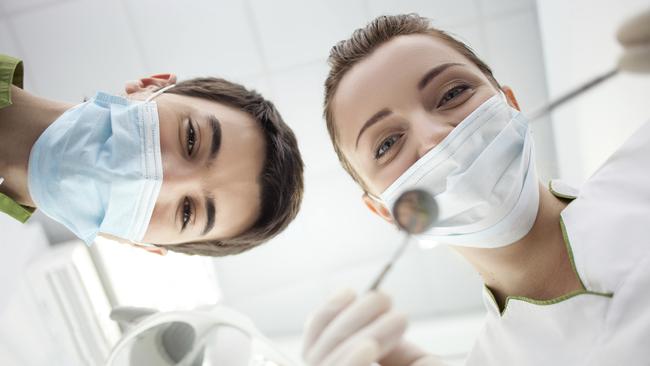Dentists seek political support in resisting intrusion by insurers
Dentists are lobbying political parties to back patient savings accounts as a way to limit the influence of health insurers.

Dentists are lobbying the major political parties to support patient savings accounts in an effort to limit the influence of health insurers on the industry.
Behind the controversy over continuing changes to hospital cover, some insurers have been taking a tighter rein over the benefits they pay dentists under general treatment or “extras” cover.
Australia’s largest insurer, Bupa, has taken the lead in this area, not only contracting dentists but buying dental networks in an effort to provide certainty of costs and treatment to members.
When Bupa recently withdrew cover for a series of hospital procedures given restricted cover, a company spokesman said it was partly to allow for “additional benefits such as introducing gap-free dental care on a number of common preventive dental services at selected dentists”.
Meanwhile, the Australian Competition & Consumer Commission is preparing to give HCF — which is planning a merger with HBF to become the largest not-for-profit — the power to establish its own dental clinics and set standard fees.
In response to such market manoeuvres, the Australian Dental Association has commissioned a report from the Centre for International Economics on health savings accounts that effectively will allow people to self-insure for general treatment. For an average cost to government of $186 a person, the accounts may generate annual savings of $1225 a person, an alternative to the commonwealth-subsidised insurance industry.
ADA president Hugo Sachs says the government, by supporting such accounts, can encourage people to make responsible decisions and exercise more market power.
“It provides a level of competition that private health insurers don’t have at the moment, and it also provides a greater incentive for people to more closely manage their health and their health spending,” Sachs says.
He says in dental and, to a lesser extent, optometry, insurers have sought extraordinary control, not only over prices but also potentially procedures and the availability of services.
“You can’t be the insurer, the provider of the treatment and the designator of the treatment. You end up in a managed care situation, and that is bad for the consumer,” he says.
Consumers Health Forum chief executive Leanne Wells has welcomed the report, saying it brings “fresh scrutiny to what is becoming an increasingly fraught issue for consumers”.
“That the association is suggesting such a big change in the way dental and other allied healthcare is covered is understandable, given the way current health insurance policies are failing consumers and troubling many dentists,” Wells says. “It demonstrates that consumers, dentists and the taxpayer are receiving relatively poor returns in terms of health insurance cover for dentistry and other general treatment.”
The forum has called for a Productivity Commission inquiry into health insurance, which is also likely to be a Labor election policy, depending on the opposition’s terms of reference. So far Bill Shorten has focused on hospital cover and rising premiums.
According to Australian Prudential Regulation Authority data for the December quarter, dental procedures accounted for more than 23 million, or 44.54 per cent of all, general treatment services covered by insurers.
Dental is by far the highest cost, and highest growth, of all general treatment areas. In the same quarter, insurers paid $1.29 billion in benefits for dental treatment, which made up 52.5 per cent of total outlays outside of hospital.
Sachs says APRA data also shows the average rebate paid per dental service in 2015 was $65, dropping to $63 in 2016 before returning to $65 — “that’s 2015 rebate levels”.
But Rachel David, head of insurance lobby Private Healthcare Australia, argues that members’ concerns over out-of-pocket costs have prompted the intervention by insurers.
“Vertical integration into dental care by health funds and preferential rebates for contracted dentists has been driven entirely by consumer demand for access to high quality and affordable dental care,” David says.
“Many consumers fail to access preventive dental care because of uncertainty about wildly variable out-of-pocket costs and end up presenting with serious dental problems as a result. Differential rebates are used across all specialist health providers to ensure those who enter into contracts with health funds to cover the gap are appropriately remunerated.”
Last Tuesday was World Oral Health Day, and the ADA and Australian Health Policy Collaboration gave an assessment of the nation’s dental health. They found 90 per cent of adults had experienced decay in their permanent teeth and one-third of five to six-year-olds had decay in their baby teeth.
Access and affordability remain the biggest issues in dental care in Australia, with waiting lists for public dental services still attracting criticism.
In 2014 the then federal government agency Health Workforce modelled the future demand for, and supply of, dentists and found “no major areas of concern”.


